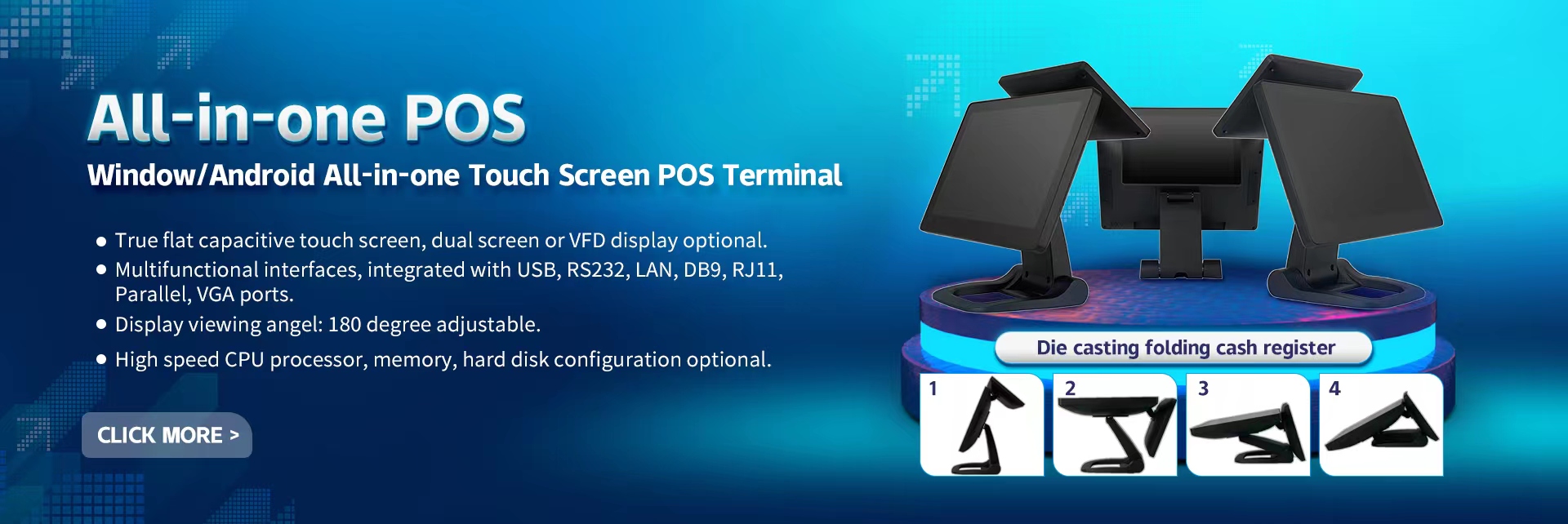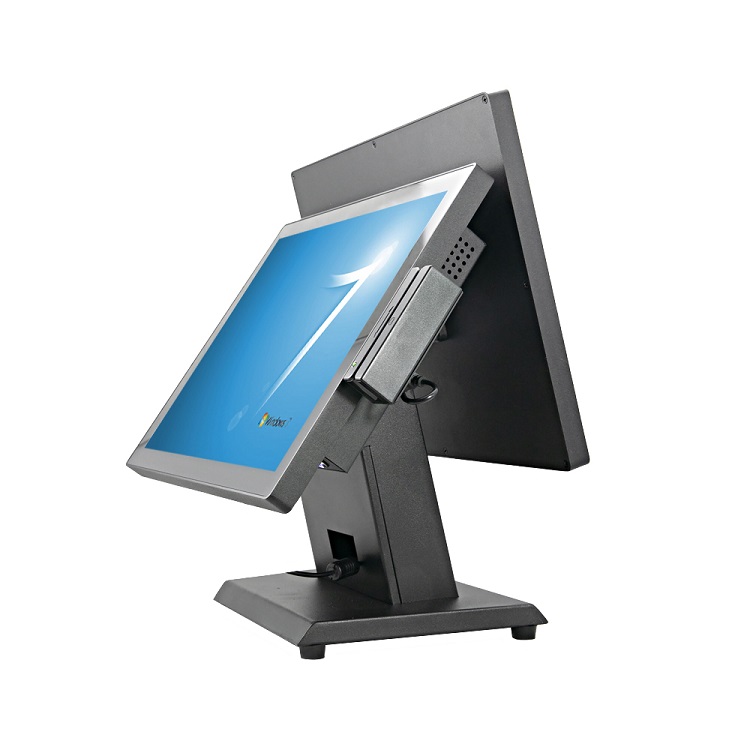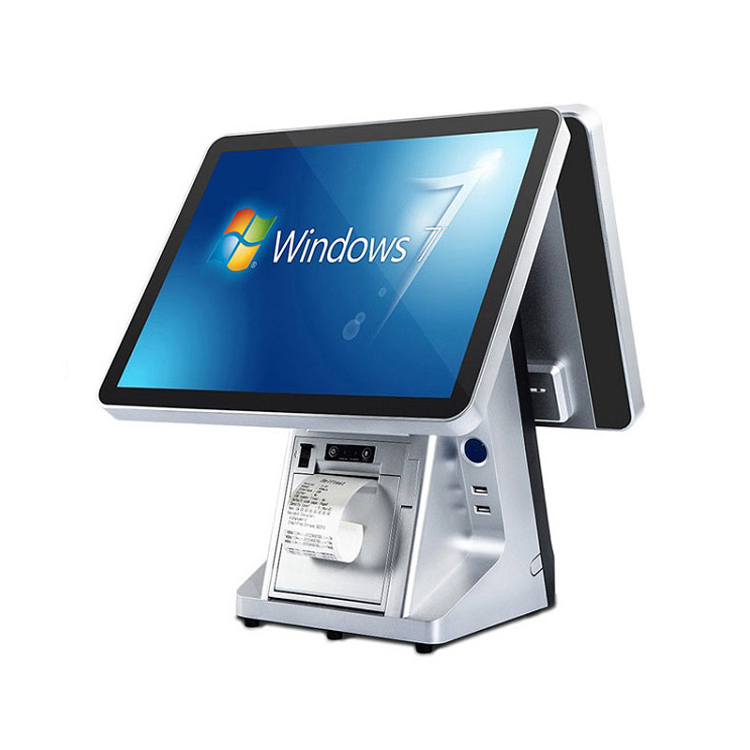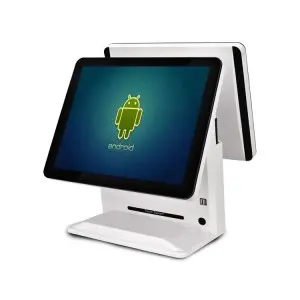A point-of-sale terminal is a specialised computer system that facilitates transactions between a business and its customers. It is the central hub for processing payments, managing inventory and recording sales data. It not only provides a convenient way to collect payments, but more importantly, it optimises the retail process, improves work efficiency and provides accurate business data, thus helping retailers to achieve refined management, reduce losses and increase profits.
1. The working principle of point-of-sale terminals
1.1. Basic Composition of a POS System: A POS system usually consists of the following key components:
1. Hardware equipment: including computer terminals, displays, printers, scanning guns, cash drawers, etc.
2. Software applications: including applications for order management, inventory management, payment processing, report analysis, and other functions.
3. Database: centralized database for storing sales data, inventory information, product information and other data.
4. Communication equipment: equipment used to connect the POS system with other devices to achieve data interaction and synchronous updates, such as network interfaces, wireless communication equipment.
5. External devices: such as credit card machines, payment terminals, barcode printers, etc., are used to support specific payment methods and business needs.
1.2. Connection Methods between POS System and Other Devices: POS system can communicate with other devices through different connection methods, including:
1. Wired connection: connecting POS terminals with computers, printers, scanners and other devices through Ethernet or USB cables to achieve data transmission and device control.
2. Wireless connection: connect through Wi-Fi, Bluetooth and other wireless technologies, which can realize wireless payment, wireless scanning and other functions.
3. Cloud connection: Through the cloud platform provided by the cloud service provider, the POS system is connected with the back-office system and other terminal devices to achieve data synchronization and remote management.
1.3Working Principle of POS Terminal
1.Product Scanning: When a customer chooses to purchase an item, the staff member scans the product's barcode using the barcode scanner that comes with the POS terminal. The software recognises the product and adds it to the transaction.
2.Payment Processing: The customer selects their preferred payment method. The payment processing hardware securely processes the transaction, debiting the customer's account for the purchase amount.
3.Receipt Printing: After successful payment, the POS generates a receipt that can be printed for customer records.
If you have any interest or query during the selection or use of any barcode scanner, please Click the link below send your inquiry to our official mail (admin@minj.cn) directly! MINJCODE is committed to the research and development of barcode scanner technology and application equipment, our company has 14 years of industry experience in the professional fields, and has been highly recognized by the majority of customers!
2. Point-of-sale terminals in the retail industry
2.1. Challenges and opportunities in retailing:
1.Challenges: The retail industry is facing fierce competition and changing consumer demands, as well as pressures on inventory management and sales data analysis.
2.Opportunities: With the development of technology, the application of point-of-sale terminals has brought new opportunities to the retail industry, which can increase sales and customer loyalty by improving efficiency, optimizing user experience and providing personalized services.
2.2. Describe a specific real-life case: A case of a large retail chain using POS to improve business efficiency and increase sales.
The chain has deployed POS terminals in several shops, using the POS system for sales data collection, inventory management, and order processing. With POS terminals, shop staff can complete the sales process more quickly and provide a better customer service experience. At the same time, the system can also update inventory information and sales data to the back office system in real-time, so that shop staff and management can keep track of the operation of each shop.
For example, when a customer buys a product in a shop, the point-of-sale terminal can quickly obtain product information through a scanning gun and calculate the corresponding sales amount. At the same time, the system will automatically update inventory data to ensure timely replenishment of goods. Customers can check out through a variety of payment methods such as swipe cards and Alipay, providing a convenient payment experience.
In addition, the point-of-sale terminals can analyze sales data through the backend system to provide decision-making support for the management. They can get real-time information on product sales, customers' buying habits, best-selling products, etc., for better merchandise management and promotion strategy development.
2.3. Emphasise how POS can be used to achieve business growth and efficiency improvement: The following business growth and efficiency improvement objectives can be achieved by using POS:
1.Enhance sales speed and customer experience: Rapid collection of sales data and payment processing through POS can shorten purchase time and improve sales efficiency while providing convenient payment methods to increase customer satisfaction and loyalty.
2.Optimization of inventory management: real-time updating of inventory data through POS terminals enables timely understanding of the sales situation, avoids out-of-stock or inventory backlog problems, and improves the accuracy of inventory management.
3.Data analysis and decision-making support: Point-of-sale terminals can analyze sales data through the back-end system, provide detailed sales reports and trend analyses, and provide the basis for management to formulate reasonable merchandise management and promotional strategies, so as to achieve business growth and profit enhancement.
4.Management and monitoring: Point-of-sale terminals can be connected through the cloud to realize remote management and monitoring so that the management can check the sales and inventory of each shop at any time, adjust the business strategy and resource allocation in time, and improve management efficiency.
If you are interested in point-of-sale terminals, we suggest you get more related information. You can contact vendors to learn about the different types of POS and their functional features so that you can make the right choice for your business needs. Similarly, you can also learn more about the use cases of POS and how it has been successfully applied in the retail industry to enhance business growth and efficiency.
Phone: +86 07523251993
E-mail: admin@minj.cn
Official website: https://www.minjcode.com/
If You Are in Business, You May Like
Recommend Reading
Post time: Nov-10-2023





